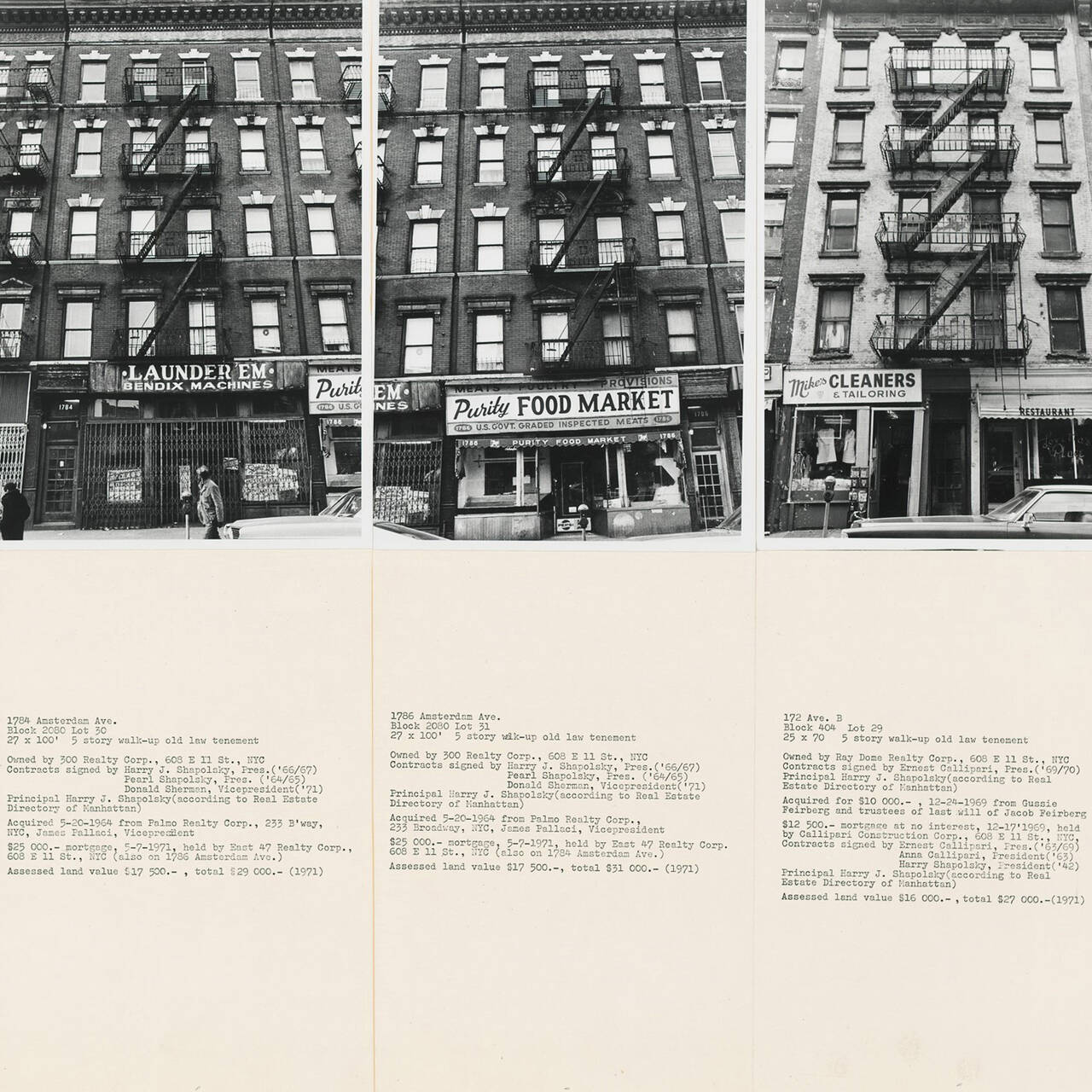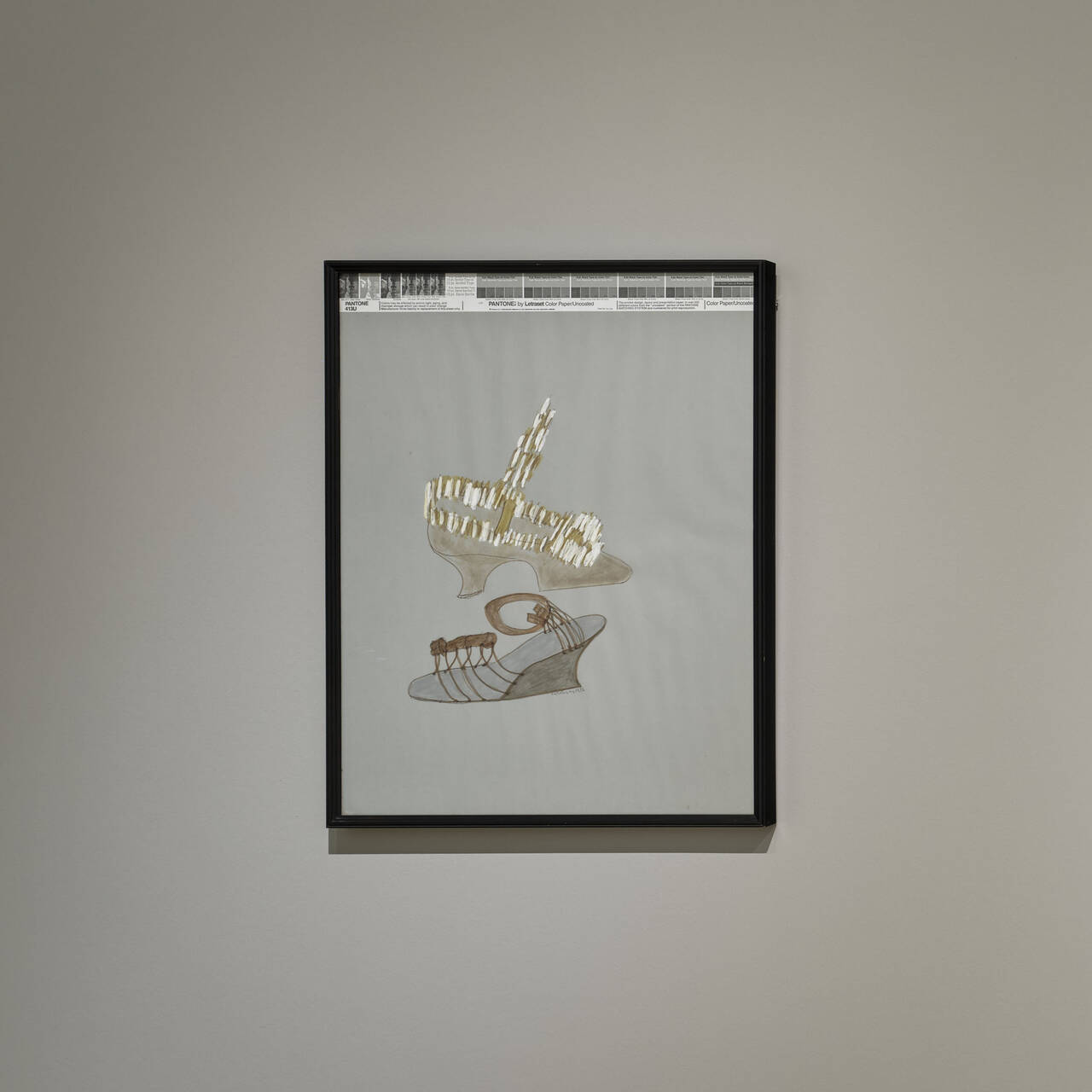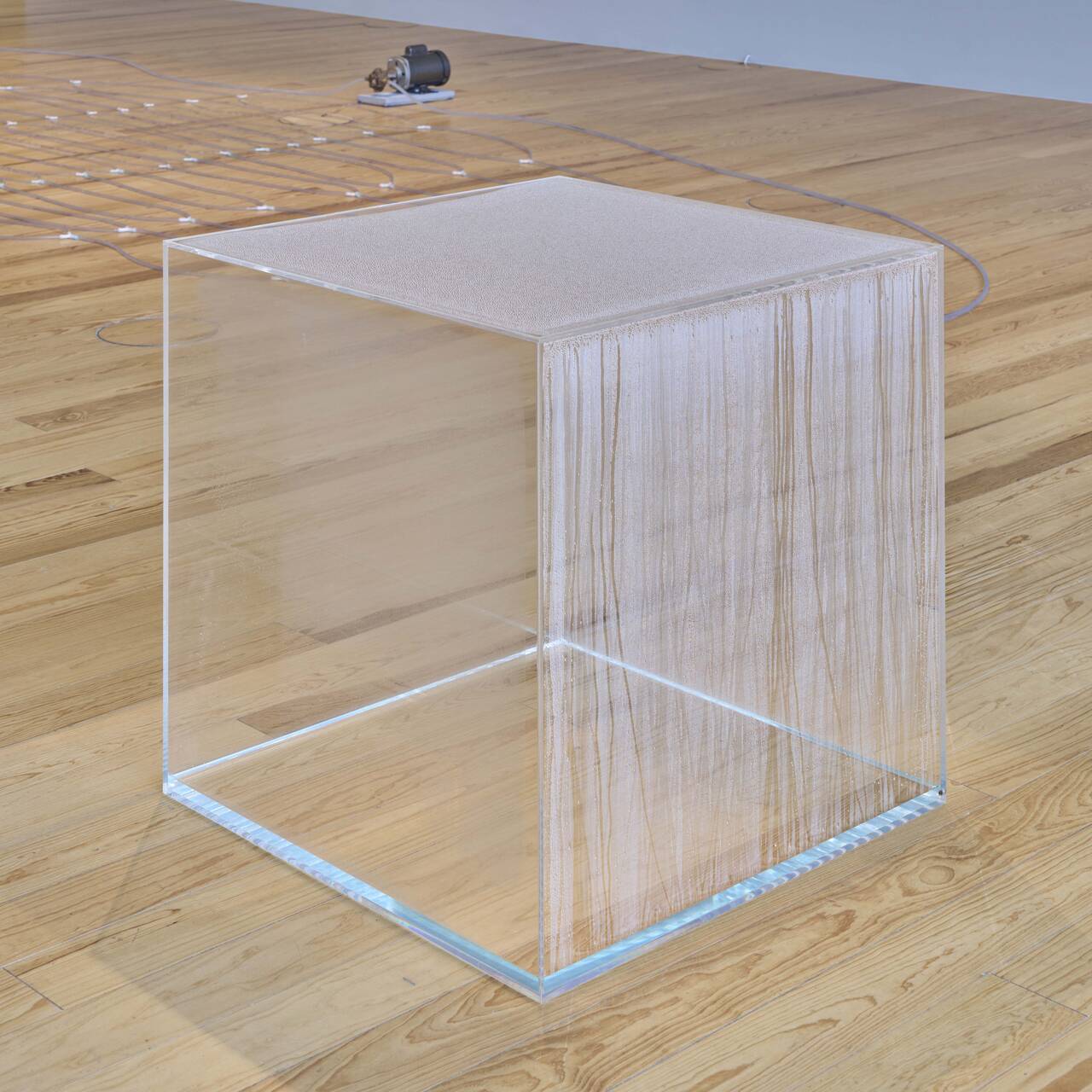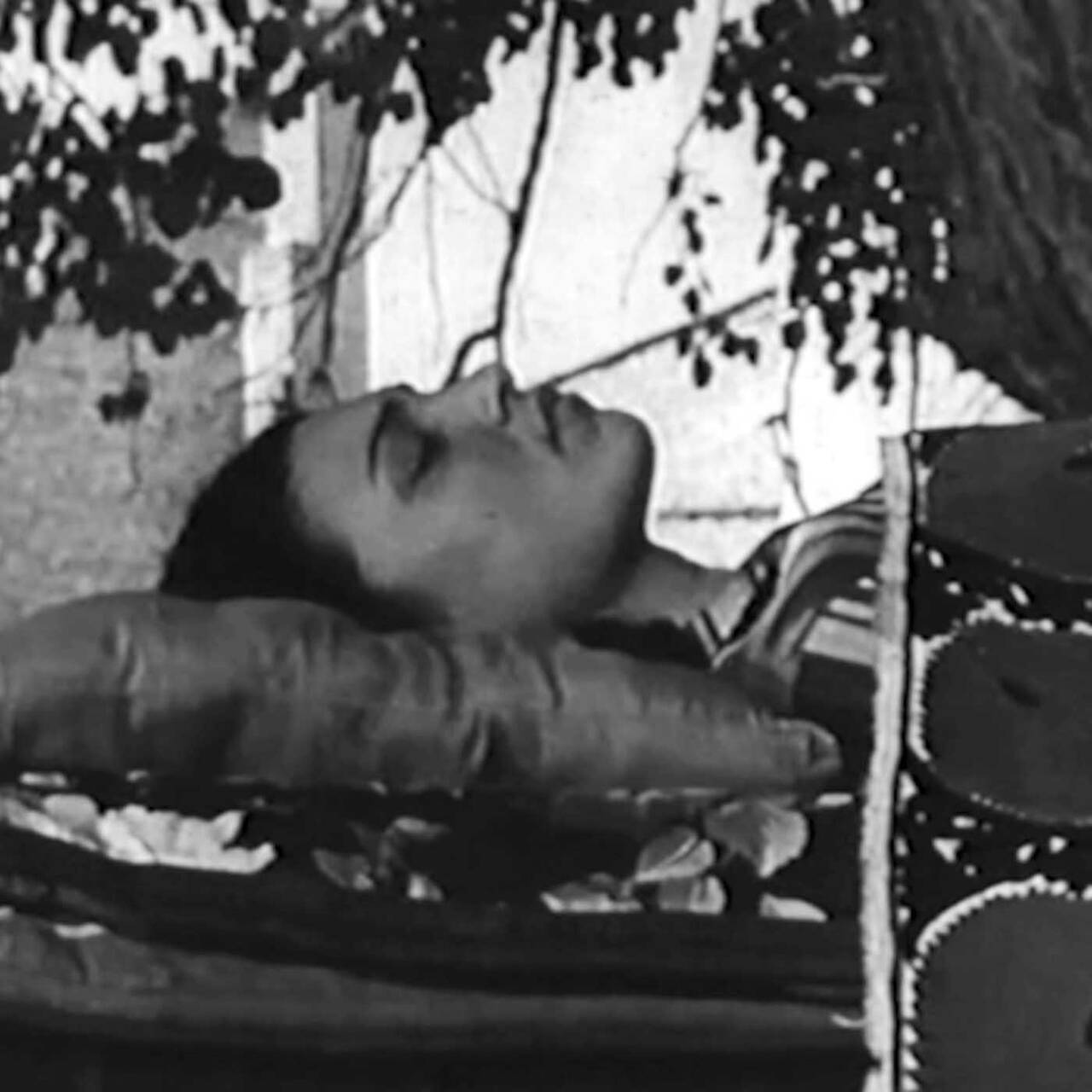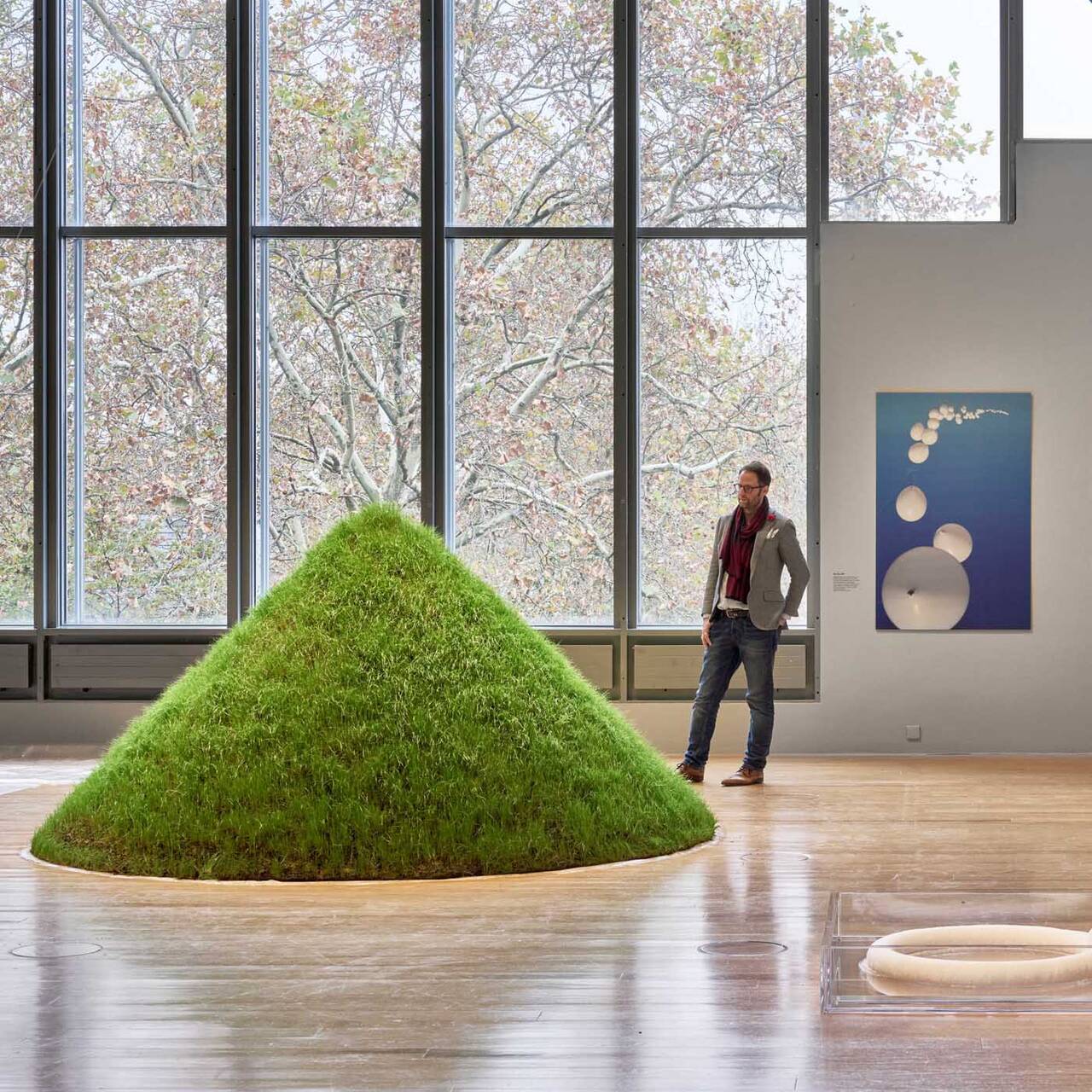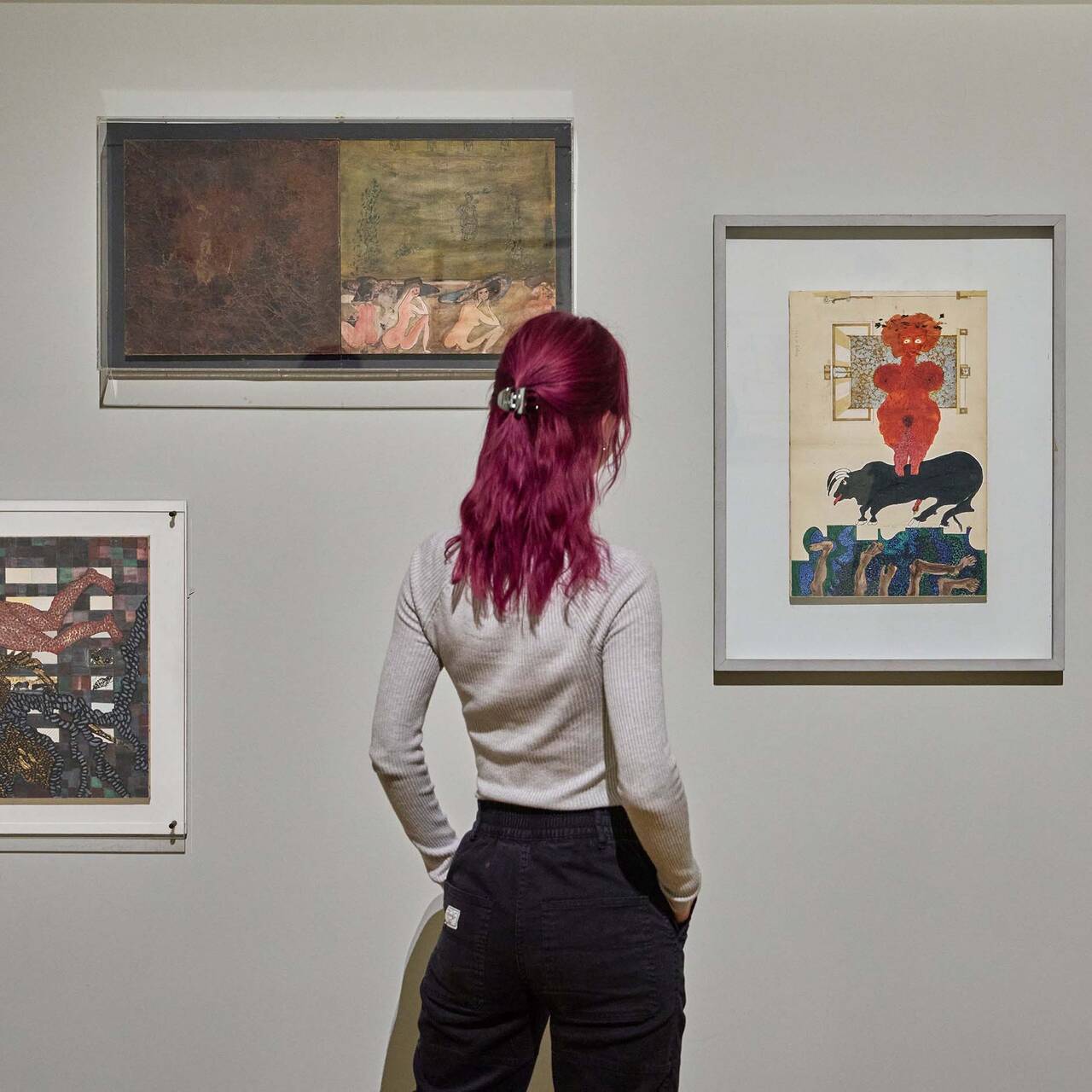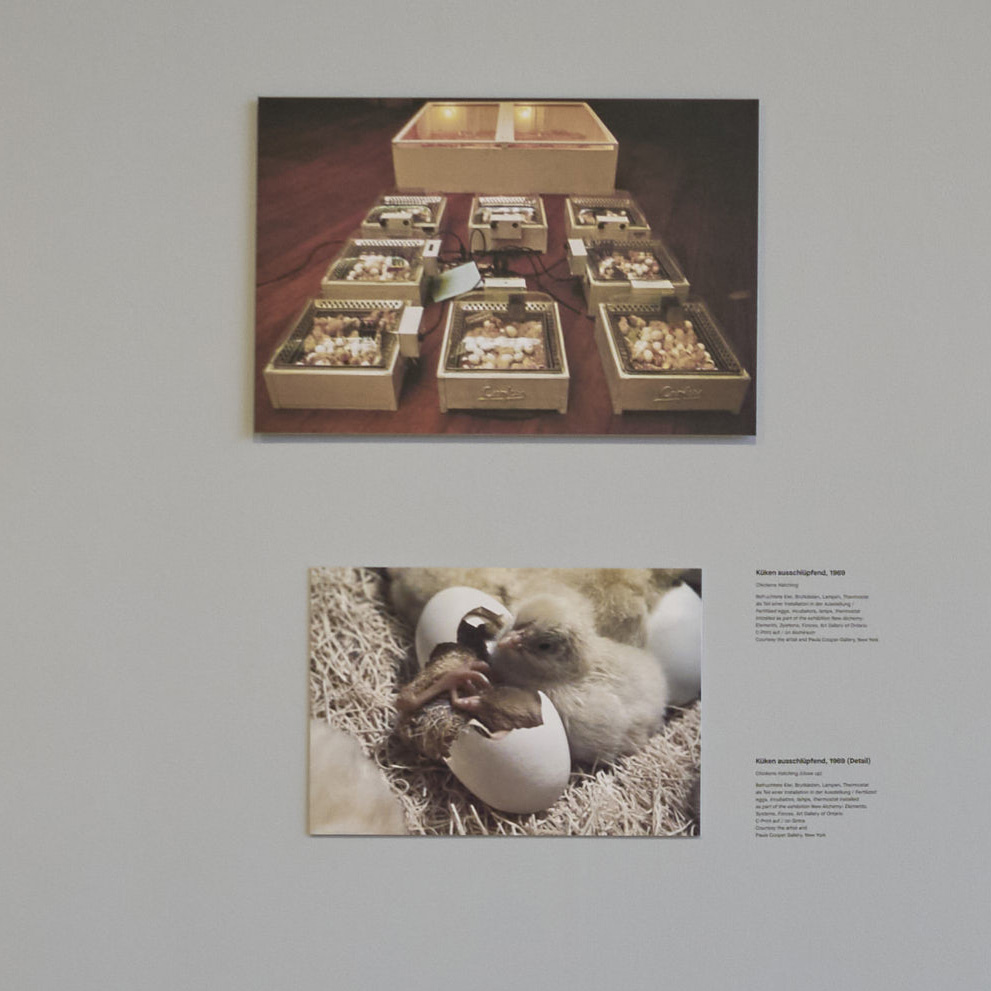CAROL RAMA was one of the most provocative female artists of the 20th century. With her explicit depictions of sexuality, physicality, and tabooed subjects she consciously pushed back against established boundaries and this meant she was misunderstood for a long time. Here are 10 fascinating facts about her life and work.
1. Free, non-conformist and well informed
Carol Rama’s artistic career attests to her immense knowledge of historical and contemporary art movements, despite the fact that she herself was quick to abandon the formal art training she began in her native Turin in the 1930s. Perhaps this move explains how the exceptional artist came to create her own individual artistic language, as her autodidactic approach gave her the freedom to develop outside of academic norms and devise new, radical forms of expression that could not be fitted into any stylistic pigeonhole.

Portrait: Carol Rama, ca. 1946, Image via casatigallery.com
2. Between provocation and overstepping boundaries
One special trait of Carol Rama’s art is her fascination with the outlandish and the way she toys with provocation. Her early work, consisting of watercolors from the 1930s and 1940s, already depicts scenes that broke with all the conventions inherent to a Catholic and fascist-influenced Italy: Scenes in a psychiatric ward became motifs in the paintings as did a woman shitting or people masturbating or performing other sexual acts. Rama herself once said: “I have always been fascinated by things and situations that other people found unacceptable.” It is therefore hardly surprising that she is often included in research on feminist discourse given that her works not only represent a transgression of social taboos but also a rebellion against the patriarchal perspective that views women as passive objects.
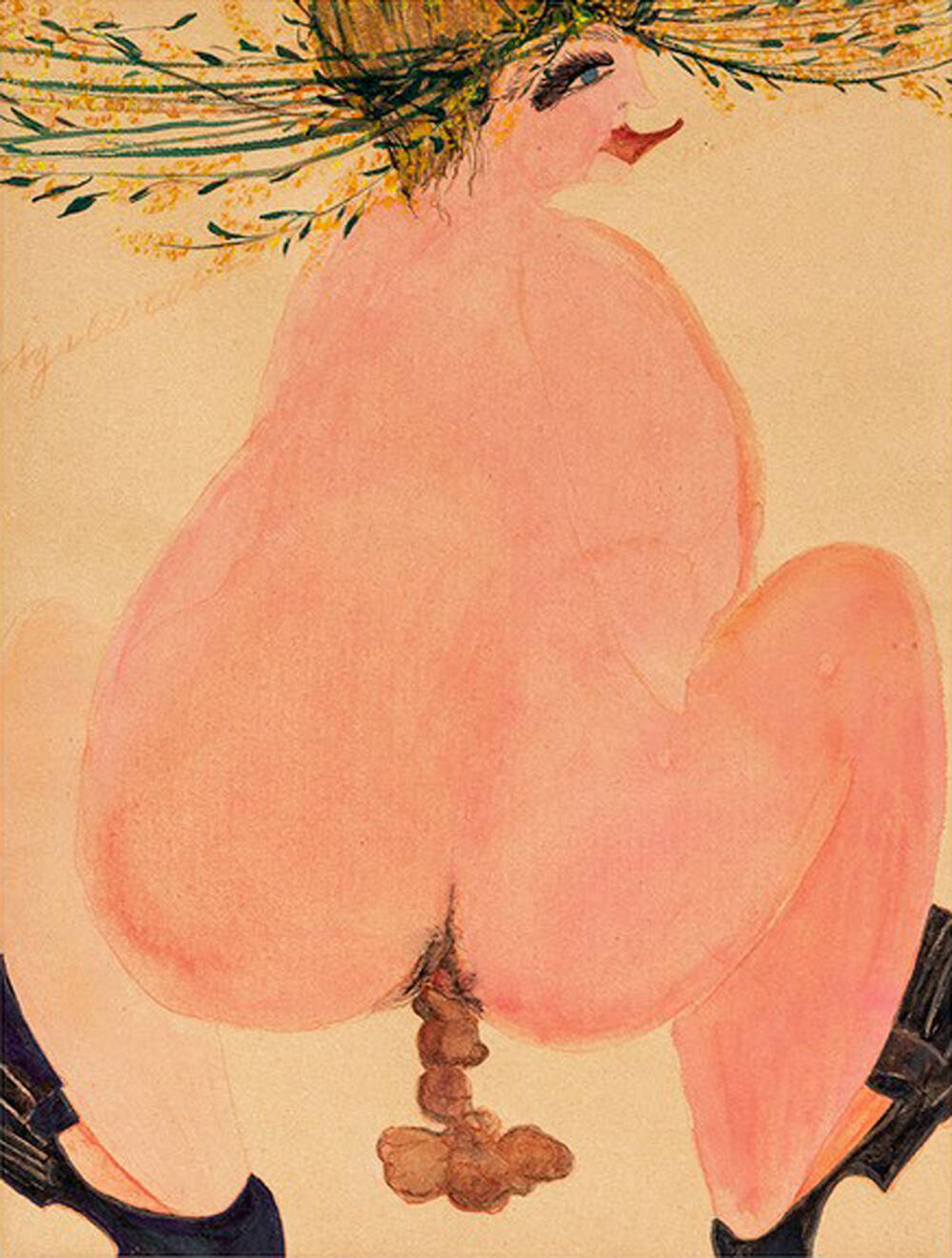
3. A virtuoso of self-portrayal
Rama was not only adept at staging her art, but also at presenting her own person. She liked to recount stories from her life that suggest a biographical interpretation of her works: for example, when she uses the name of the psychiatric women’s clinic where her mother stayed temporarily in the title of her work “I due Pini”, or names works after members of her family, whose tragic lives she was all too ready to describe. That said, it often remains unclear whether her anecdotes are poetic extensions of her art or whether her works are poetic treatments of her life. Rama herself once said, “everything and nothing” was “biographical”. Life and work, truth and fiction merge in her oeuvre – almost as if she had specifically sought to overcome these boundaries.
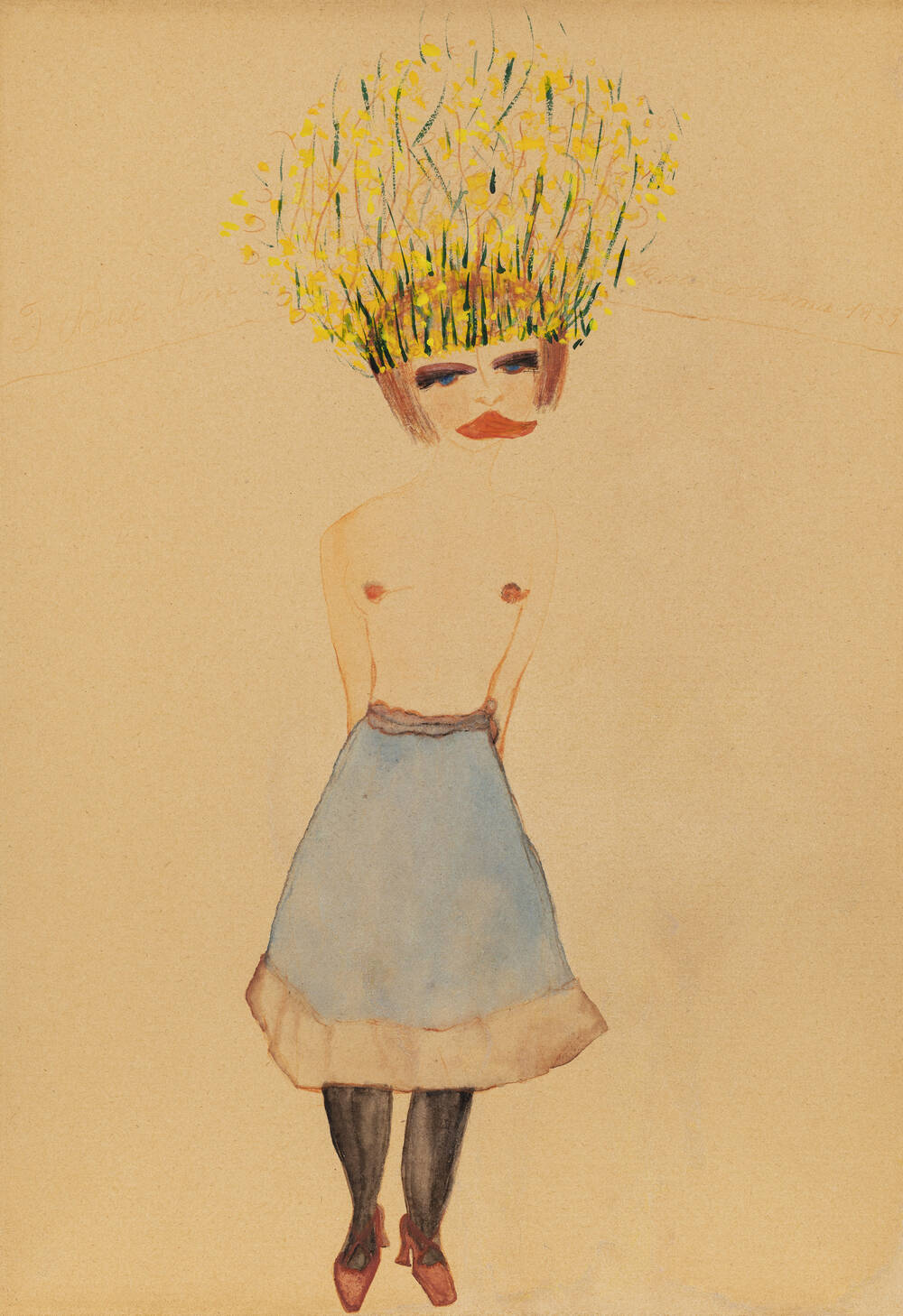
4. Just an anecdote? A scandalous case for censorship
One particularly compelling but unverified anecdote about the rebellious artist relates to her first solo exhibition. According to Rama, the show in 1945 in Turin which reportedly presented mainly erotic watercolors caused a scandal that resulted in its immediate closure. The depiction of naked, partly fragmented female bodies in sexual poses came to the attention of the Vatican, which immediately lodged a complaint. The situation was quite unacceptable for the conservative authorities and this, Rama suggested, ultimately led to the exhibition being censored. It was not until more than 30 years later, in 1979, that the provocative watercolors were once again presented to the public – again in Turin and this time comprehensively documented.
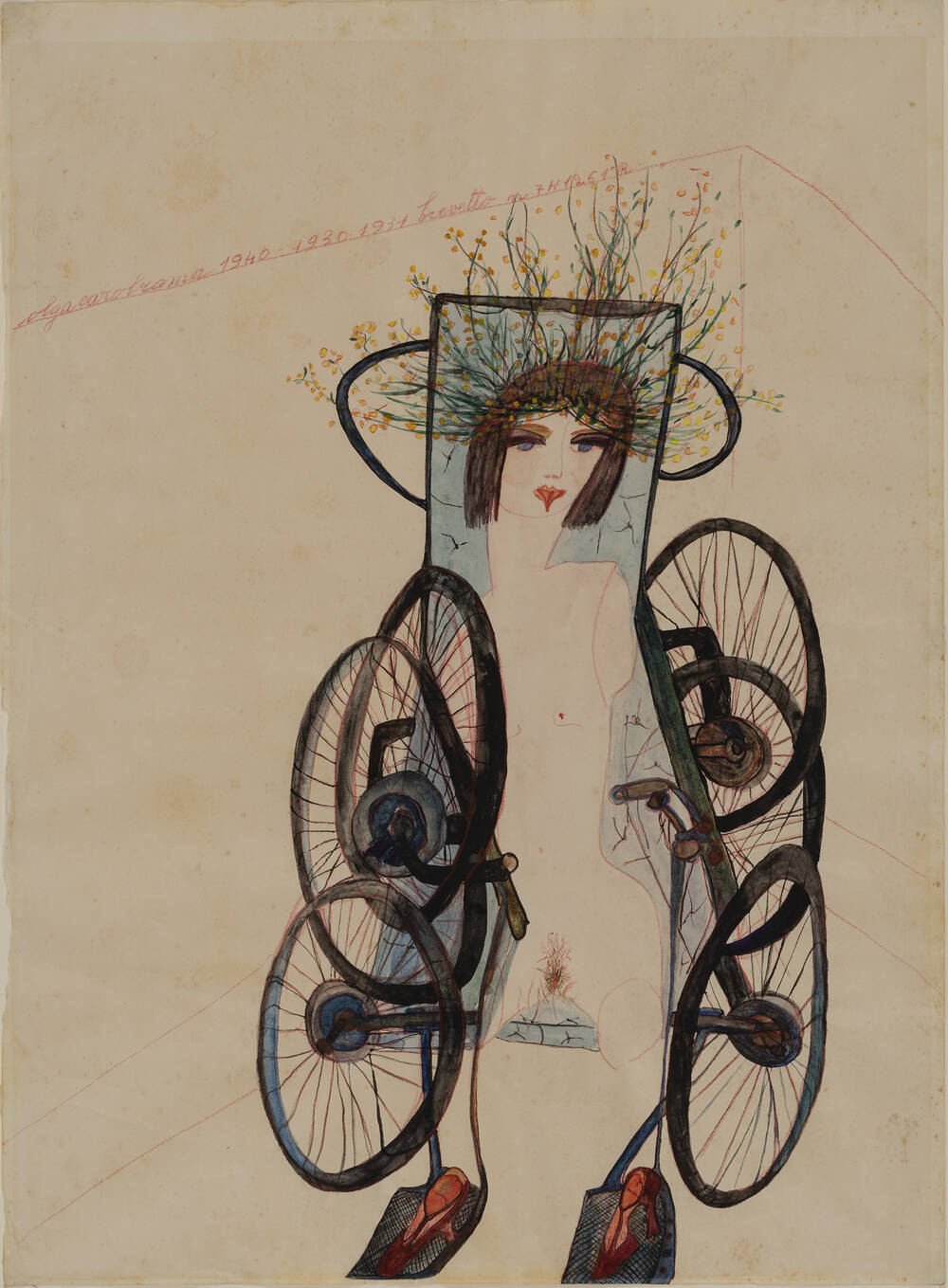
5. Reinventing her style rather than standing still
Carol Rama went through many artistic phases and reinvented herself time and again. She changed her style virtually every ten years: beginning with the early figurative, erotic watercolors and almost faceless anti-portraits, then in the 1950s as a member of the Movimento Arte Concreta (MAC) she initially turned to abstraction, before devoting herself to various material experiments in the 1960s and 1970s. These were in turn replaced in the following decade by a resumption and advancement of figurative, pictorial themes and drawings.

6. Revolution in materials: Carol Rama’s radical bricolages and Gomme
In the 1960s, Carol Rama began experimenting with industrial materials such as rubber, metal, doll’s eyes and other everyday objects, which once again attracted the attention of the art scene. Her “bricolages”, a term her friend Edoardo Sanguineti had adopted from Claude Lévi-Strauss and applied to Rama’s new series of works, expanded the idea of classic collage to include the free use of spray paint, adhesives and assembled objects. This innovative approach set new standards in contemporary art. In the 1970s, Rama continued her material experiments, by using bicycle and car tire tubes for the “Gomme” body of work. The biomorphic shapes and skin-like materiality lend the works a sensual quality, which marked a break with the previously strict compositions and established Rama as a radical innovator.
7. By no means an outsider
Carol Rama was by no means an outsider. A glance at the countless photos in her studio reveals the inspiring social circles in which she moved: In addition to a large number of well-known personalities from the Italian art and intellectual scene such as the architect and designer Carlo Mollino or composer Luciano Berio, May Ray can also be seen. The quirky artist developed a special friendship with the famous surrealist photographer. Their many conversations, letters and joint travels served to decisively influence both artists’ development.
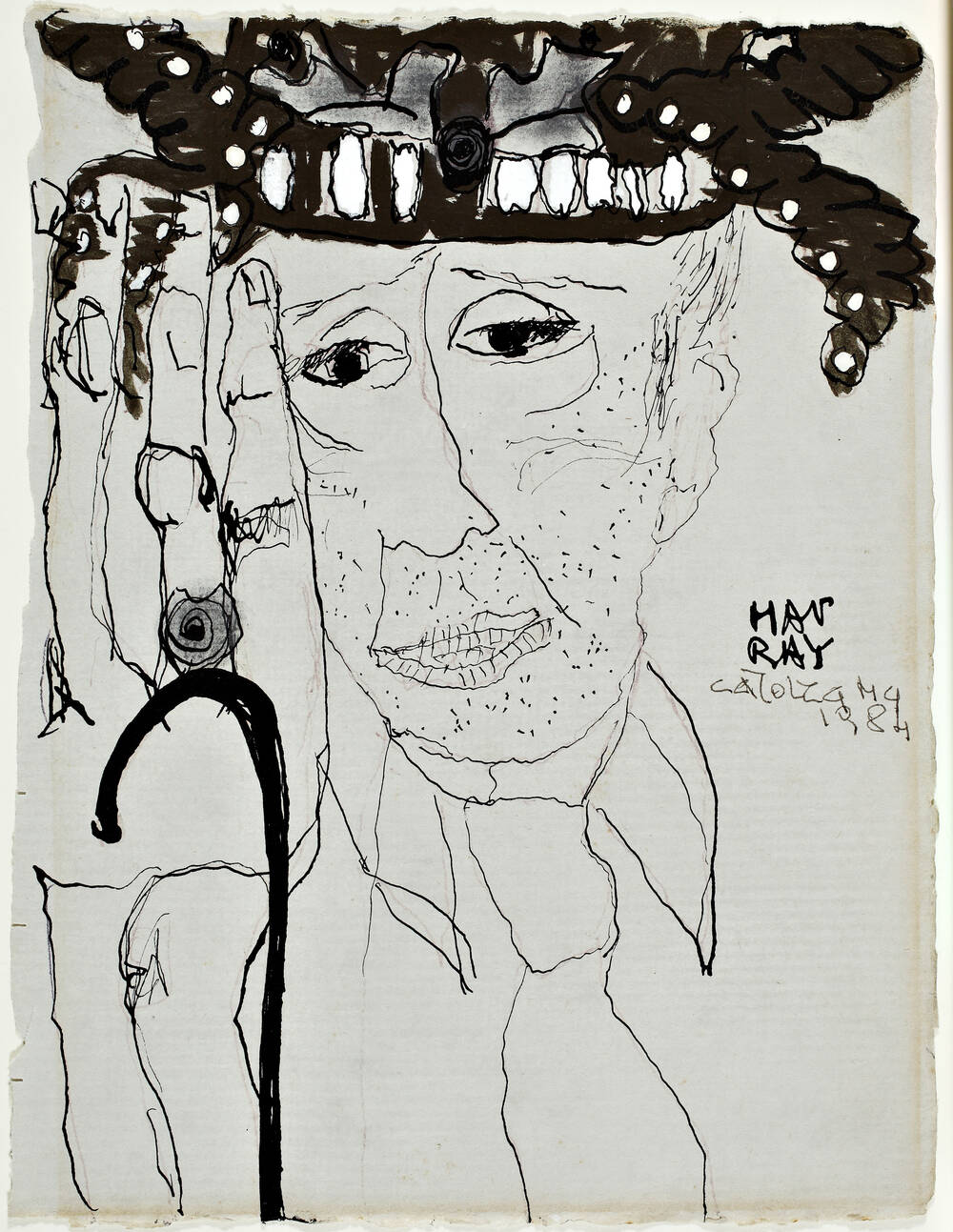
8. The long road to fame
Although Carol Rama was a well-known figure within the Italian art and intellectual scene it was not until late on that she received international recognition for her wide-ranging oeuvre. One reason for this were the patriarchal structures in the art business, which for a long time made it difficult for female artists like her to achieve greater visibility. It was not until 2003, at the age of 85, that she won the Golden Lion at the Biennale di Venezia for her life’s work – at a time when the debate about the female body and gender roles was becoming increasingly important and Rama had already exhibited five times at the Biennale.

Golden Lion, Image via taz.de
9. Inspiration for younger generations of artists
Carol Rama’s art has always revolved around such universal issues as sexuality, lust, illness, and death. With her radical, often merciless view of these aspects of life she questioned society’s norms and created works that were ahead of their time. Rama’s exploration of these subjects became an important source of inspiration for younger generations of artists, who tackled similar issues from a decidedly feminist perspective.
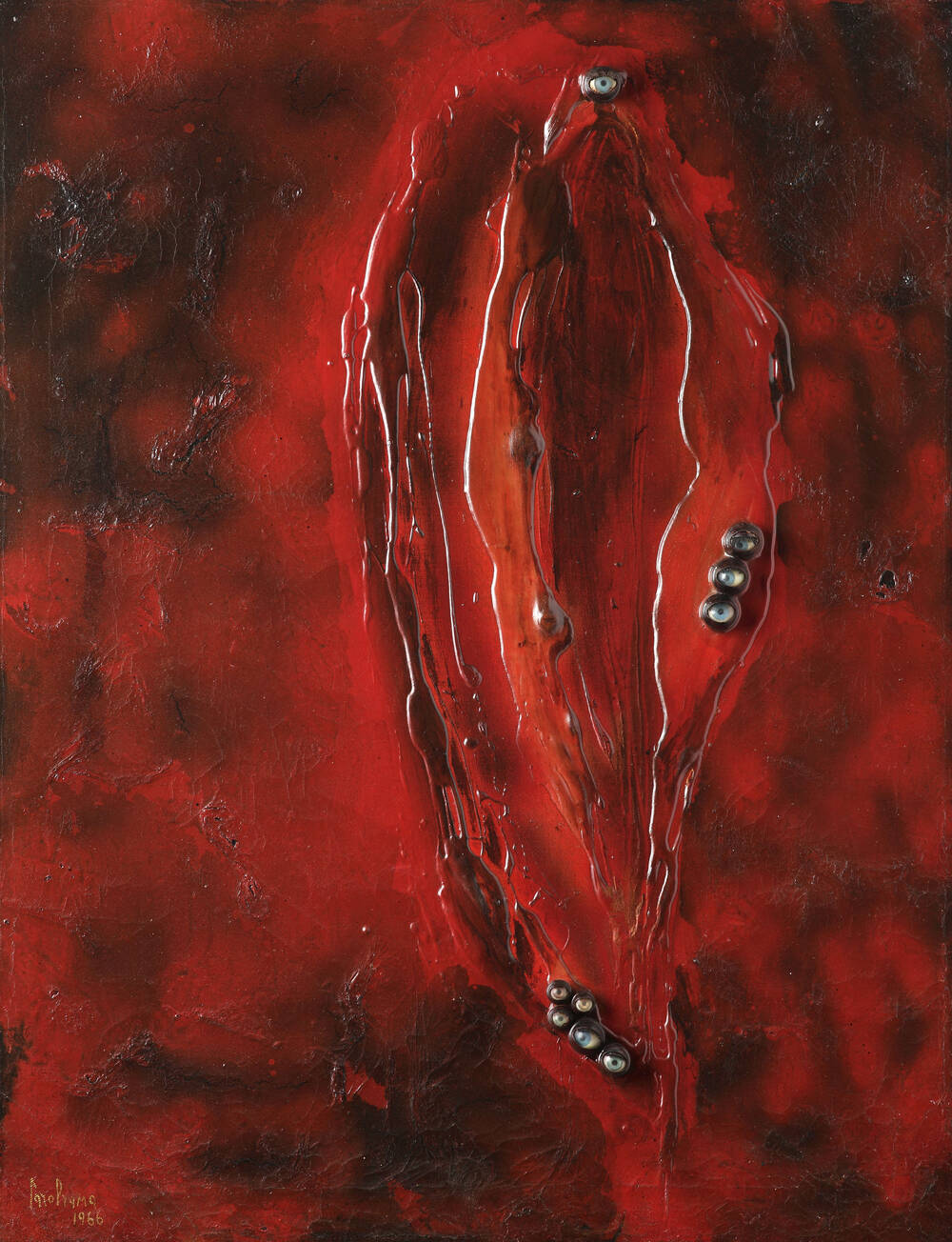
10. Her studio – a gesamtkunstwerk in Vogue
Carol Rama lived and worked in her loft apartment at Via Napione 15 in Turin for over 70 years. Her home was both a studio and a treasure trove, full of everyday objects that she integrated into her art. What is more, her apartment itself became a work of art, so to speak, in which her creative spirit could flourish freely: Nor did there seem to be any separation between art and life there. The studio, which the Italian edition of Vogue featured as a gesamtkunstwerk, later became a hot tip for tourists after it was opened to the general public for the first time in 2019.

Carol Rama, Photo: Pino Dell’Aquila, Image via artslife.com
